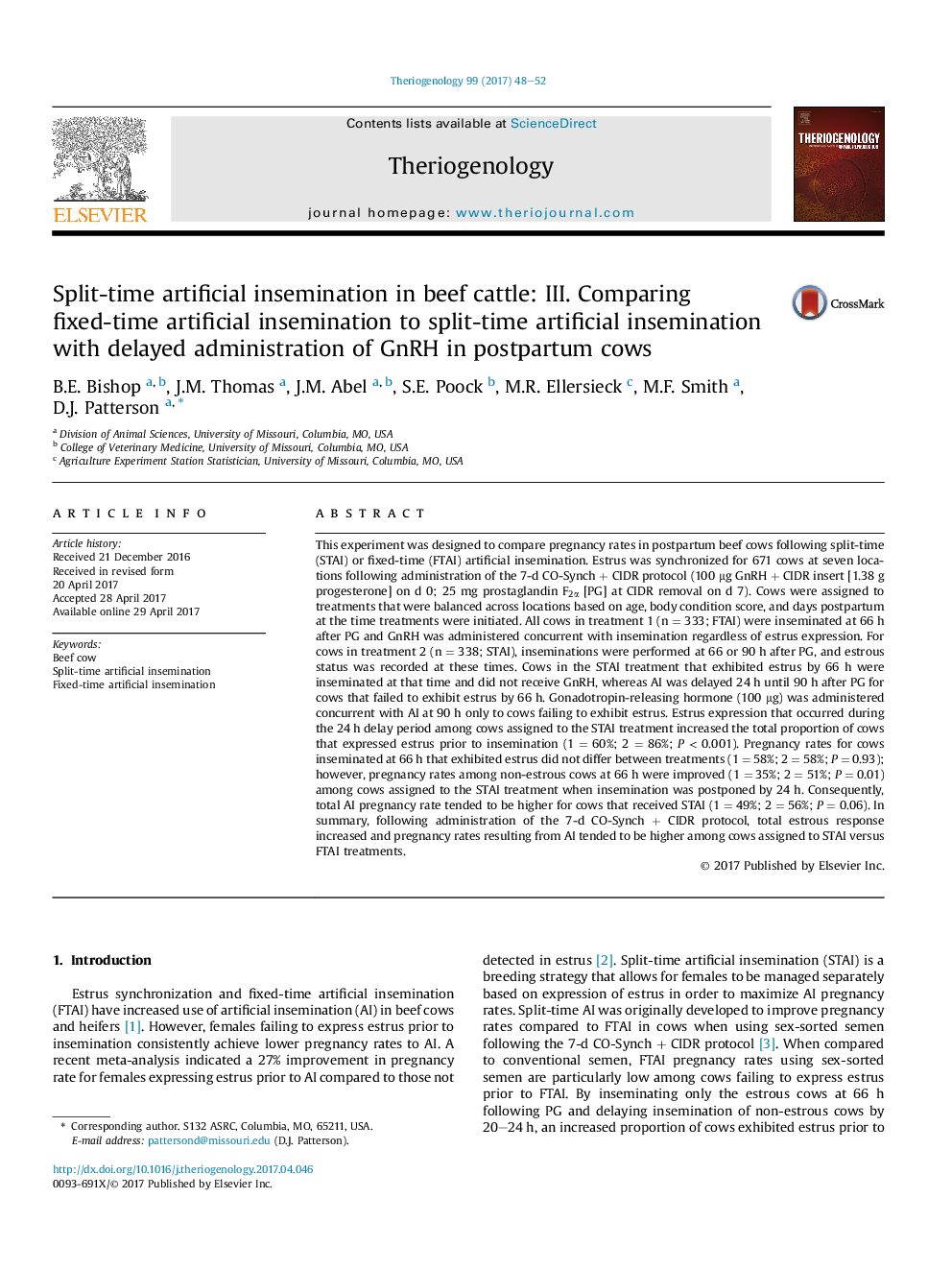| کد مقاله | کد نشریه | سال انتشار | مقاله انگلیسی | نسخه تمام متن |
|---|---|---|---|---|
| 5523044 | 1546070 | 2017 | 5 صفحه PDF | دانلود رایگان |

- Estrus expression prior to insemination increased for cows assigned to the STAI treatment.
- Pregnancy rates among non-estrous cows at 66 h improved among STAI treated cows when insemination was postponed by 24 h.
- Total AI pregnancy rate tended to be higher for cows that received STAI.
- Pregnancy rates resulting from AI tended to be higher among cows assigned to STAI versus FTAI treatments.
This experiment was designed to compare pregnancy rates in postpartum beef cows following split-time (STAI) or fixed-time (FTAI) artificial insemination. Estrus was synchronized for 671 cows at seven locations following administration of the 7-d CO-Synch + CIDR protocol (100 μg GnRH + CIDR insert [1.38 g progesterone] on d 0; 25 mg prostaglandin F2α [PG] at CIDR removal on d 7). Cows were assigned to treatments that were balanced across locations based on age, body condition score, and days postpartum at the time treatments were initiated. All cows in treatment 1 (n = 333; FTAI) were inseminated at 66 h after PG and GnRH was administered concurrent with insemination regardless of estrus expression. For cows in treatment 2 (n = 338; STAI), inseminations were performed at 66 or 90 h after PG, and estrous status was recorded at these times. Cows in the STAI treatment that exhibited estrus by 66 h were inseminated at that time and did not receive GnRH, whereas AI was delayed 24 h until 90 h after PG for cows that failed to exhibit estrus by 66 h. Gonadotropin-releasing hormone (100 μg) was administered concurrent with AI at 90 h only to cows failing to exhibit estrus. Estrus expression that occurred during the 24 h delay period among cows assigned to the STAI treatment increased the total proportion of cows that expressed estrus prior to insemination (1 = 60%; 2 = 86%; P < 0.001). Pregnancy rates for cows inseminated at 66 h that exhibited estrus did not differ between treatments (1 = 58%; 2 = 58%; P = 0.93); however, pregnancy rates among non-estrous cows at 66 h were improved (1 = 35%; 2 = 51%; P = 0.01) among cows assigned to the STAI treatment when insemination was postponed by 24 h. Consequently, total AI pregnancy rate tended to be higher for cows that received STAI (1 = 49%; 2 = 56%; P = 0.06). In summary, following administration of the 7-d CO-Synch + CIDR protocol, total estrous response increased and pregnancy rates resulting from AI tended to be higher among cows assigned to STAI versus FTAI treatments.
Journal: Theriogenology - Volume 99, 1 September 2017, Pages 48-52